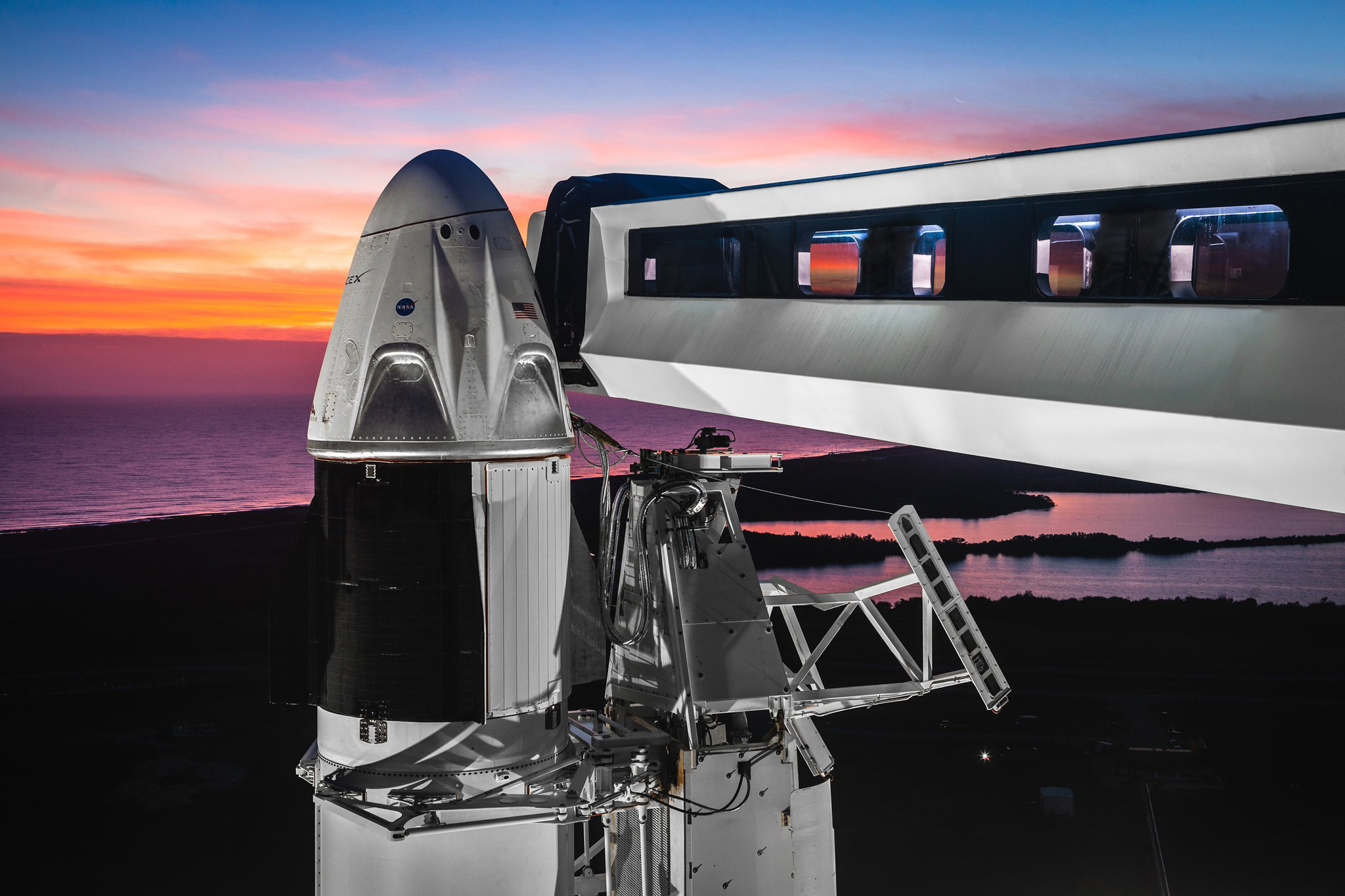SpaceX successfully launched its first Crew Dragon capsule to the International Space Station (ISS) on March 2 on a five-day mission that has now concluded.
This flight, known as Demo-1, is uncrewed. But if all goes well, Crew Dragon will likely carry astronauts to and from the orbiting lab for the first time this summer.
Launch Video| Mission Photos | Crew Dragon Tour |Dummy Astronaut Ripley
Here's what you need to know about Crew Dragon, Demo-1 and the short-term future of human spaceflight.
Latest News
What is Crew Dragon?

SpaceX has been developing Crew Dragon under a multibillion-dollar commercial crew contract with NASA. The agency signed a similar deal with Boeing, which is working on a capsule called the CST-100 Starliner.
The goal is to return orbital human spaceflight to U.S. soil. American astronauts have been dependent on Russian Soyuz rockets and spacecraft to get to and from the ISS since July 2011, when NASA retired its space shuttle fleet.
A lot of money has flowed from NASA to its Russian counterpart, Roscosmos, as a result; seats aboard the three-person Soyuz spacecraft currently sell for around $80 million apiece.
Get the Space.com Newsletter
Breaking space news, the latest updates on rocket launches, skywatching events and more!
Crew Dragon will launch atop SpaceX's workhorse Falcon 9 rocket, a two-stage vehicle that features a reusable first stage. Starliner, which is scheduled to make its uncrewed maiden flight to the ISS sometime in April, will be lofted by United Launch Alliance Atlas V rockets, which are not reusable.
How's it different from Cargo Dragon
Crew Dragon is a modified, upgraded version of SpaceX's robotic Dragon cargo capsule, which has been flying uncrewed resupply missions to the ISS under a different NASA contract since 2012.
Crew Dragon has many astronaut-related features its robotic cousin lacks — for example, seats (seven of them), windows, fancy touch-screen displays, a life-support system and an escape system. The escape system, which is designed to get Crew Dragon out of harm's way in case of a launch emergency, consists of eight SpaceX SuperDraco engines built into the capsule's body.
There are other important differences between the two vehicles as well. For instance, Dragon has traditional deployable solar arrays, but Crew Dragon's solar panels cover the spacecraft's trunk and require no action to activate.
Both Dragon variants are designed to be reusable, and SpaceX has already reflown several of the cargo craft on ISS missions. But each individual Crew Dragon will not fly multiple ISS missions for NASA, at least not initially, SpaceX representatives have said
What will Demo-1 do?
Demo-1 will launch from historic Launch Complex 39A at NASA's Kennedy Space Center in Florida. SpaceX is targeting March 2 for the liftoff, though that date is far from set in stone.
The mission is designed to test almost all of Crew Dragon's critical equipment, from its automated approach and docking gear to its life-support and re-entry systems. SpaceX personnel will monitor these systems' performance carefully for the duration of the roughly 2-week-long mission, which will end with a parachute-aided splashdown in the Pacific Ocean.
But a successful return to Earth won't announce Crew Dragon's readiness to carry crew. SpaceX will also conduct an uncrewed "in-flight abort" test with the capsule in June, to make sure the escape system is working properly.
If everything goes well with both of those flights, Demo-2 will be cleared for liftoff. That mission, which could launch as early as July, will take NASA astronauts Bob Behnken and Douglas Hurley to the ISS for about a weeklong stay.
Operational crew missions to the orbiting lab for NASA would follow the successful completion of Demo-2.
Prelude to Starship?
If SpaceX's vision holds, Crew Dragon won't fly for too long — and neither will cargo Dragon or the Falcon 9 and Falcon Heavy rockets.
SpaceX is building a new do-it-all spaceflight system, which consists of a 100-passenger spaceship called Starship and a giant rocket called Super Heavy. The reusable duo will carry people to and from Mars, the moon and other distant destinations, Musk has said, and do whatever else SpaceX needs it to, from launching satellites to cleaning up space junk.
Starship and Super Heavy will also do some work closer to Earth's surface, ferrying people on superfast point-to-point trips around the globe.
Mike Wall's book about the search for alien life, "Out There" (Grand Central Publishing, 2018; illustrated by Karl Tate) is out now. Follow him on Twitter @michaeldwall. Follow us on Twitter @Spacedotcom or on Facebook.
Join our Space Forums to keep talking space on the latest missions, night sky and more! And if you have a news tip, correction or comment, let us know at: community@space.com.

Michael Wall is a Senior Space Writer with Space.com and joined the team in 2010. He primarily covers exoplanets, spaceflight and military space, but has been known to dabble in the space art beat. His book about the search for alien life, "Out There," was published on Nov. 13, 2018. Before becoming a science writer, Michael worked as a herpetologist and wildlife biologist. He has a Ph.D. in evolutionary biology from the University of Sydney, Australia, a bachelor's degree from the University of Arizona, and a graduate certificate in science writing from the University of California, Santa Cruz. To find out what his latest project is, you can follow Michael on Twitter.









